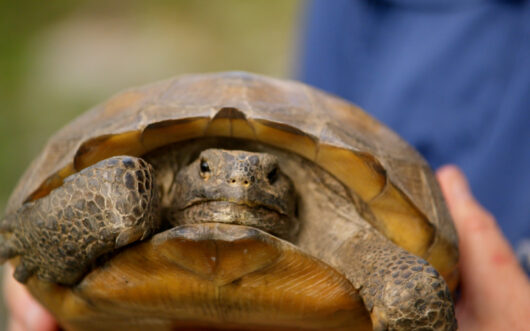Bring sea turtles, conservation, and ocean discovery into your classroom.
In Turtle Trackers, conservationists and researchers in southeast Florida work to protect nesting sea turtles and uncover the mysteries of leatherbacks’ decades at sea. This educator guide supports classroom discussion, NGSS-aligned learning, and hands-on opportunities for student engagement.
GRADES
9 – 12+
SUBJECTS
Biology, Storytelling, Ecology
Episode Overview
Sea turtles are the most widely distributed reptile on the planet, but they are also one of the most endangered reptile groups. Fortunately, conservation and protection efforts by local communities and research institutions is providing hope for the future success of sea turtles. Turtle Trackers tells the important and inspirational story of three species of sea turtle that depend on Florida’s sandy beaches for nesting, some of the people driving their restoration, and the impactful strategies they are using.
The episode introduces us to some of the key players in protecting and restoring Florida’s sea turtles, including biologists at the Boca Raton Gumbo Limbo Nature Center, biologists at the Marine Sciences Laboratory of Florida Atlantic University, and the nonprofit conservation group Upwell which focuses on turtle conservation at sea. The coordinated effort of these three groups is having a significant impact on restoring and conserving some of the most vulnerable sea turtle populations while also generating new knowledge about the ecology of critically endangered species like the leatherback during the “lost years” of their adult sea life.
Focus Questions
- What are some key life history strategies that sea turtles evolved that have allowed them to become the most widely distributed reptile group on the planet?
- Why are sea turtles now threatened with extinction throughout their global distribution?
- What are some key approaches for protecting and restoring sea turtle populations?
Key Concepts
- Threatened and Endangered Species: Due to population declines of sea turtles across their global ranges the International Union for the Conservation of Nature (IUCN) has designated six of the seven sea turtle species as threatened by extinction (see Table 1). Some Caribbean species of sea turtle have lost up to 97% of their pre-Colonial numbers and all six species of sea turtle that spend all or part of their life cycles in U.S. waters are protected by the U.S. Endangered Species Act of 1973.
- Biodiversity: The International Union for the Conservation of Nature lists more than 44,000 species threatened with extinction and habitat loss and destruction is the major threat for more than 85% of these species. Female sea turtles spend an average of 20 years at sea before using their natural homing ability to return to the beaches where they were born to lay their own eggs. When they return the turtles often find that their birth beaches have been substantially transformed by coastal development, making it often impossible to find adequate nesting sites. Identifying and protecting nesting hotspots in the long term can help mitigate this threat but also provide critical habitat for other species that depend on beach habitat. For example, the presence of the turtles and what they leave behind–egg shells, unhatched eggs, and excess hatchlings as prey–function as fertilizer for beach vegetation and food for predators.
- Climate Change: Rising temperatures are driving sea level rise across the globe. Higher sea levels are predicted to threaten turtle nesting sites by reducing sandy beach habitat. Sex determination in sea turtles is also temperature dependent–more hatchlings are female at warmer temperatures–so rising temperatures may alter the ratio of males to females in sea turtle populations.
- Conservation biology: The practice of conservation biology recognizes the intrinsic value of the Earth’s natural diversity of organisms. Conservation biology works to understand how the natural world operates, how humans affect nature, and how we can use collective scientific and cultural knowledge to conserve Earth’s biological diversity.
Curriculum Connections
NGSS
- HS-LS2 Ecosystems: Interactions, Energy, and Dynamics
- LS2.A: Interdependent Relationships in Ecosystems
- LS2.B: Cycles of Matter and Energy Transfer in Ecosystems
- LS2.C: Ecosystem Dynamics, Functioning, and Resilience
- LS4.D: Biodiversity and Humans
- HS-LS3 Heredity: Inheritance and Variation of Traits
- LS3.B: Variation of Traits
- HS-LS4 Biological Evolution: Unity and Diversity
- LS4.C: Adaptation
- ETS1.B: Developing Possible Solutions
For complete list of curriculum connections including AP & IB standards, refer to full PDF.
